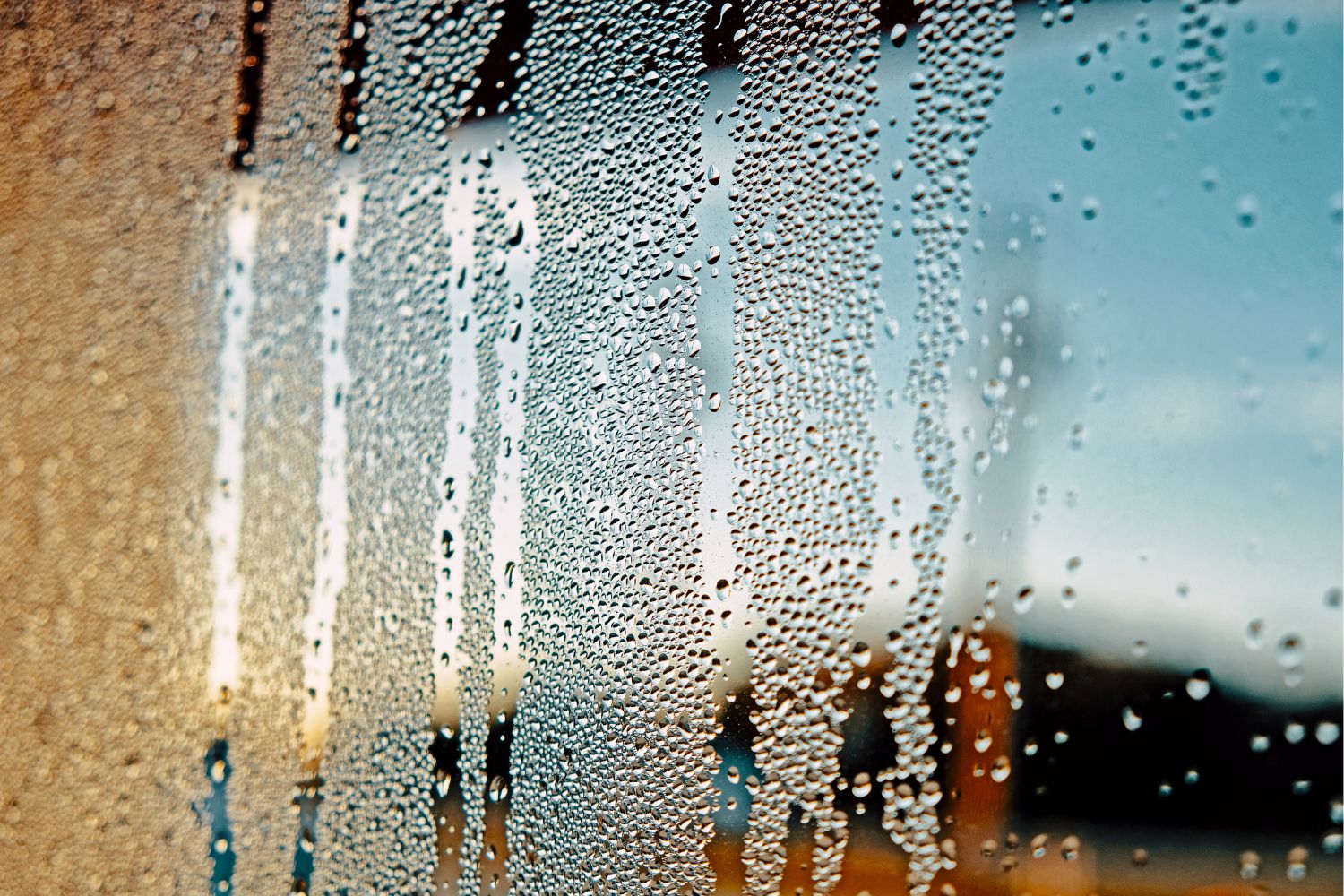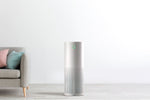What is Considered High Humidity? Understanding Levels & Risks

What is Considered High Humidity? Everything You Need to Know
Ever noticed the air in the room as heavy and sticky? That’s high humidity. When indoor humidity level rises above 60%, it can lead to more than just discomfort - it can be a breeding ground for mold, damage your home, and impact your health.
You need to ensure good ventilation and use a dehumidifier and an air purifier in conjunction with a dehumidifier in case you suspect mold due to high humidity. In this blog, we will break down the discussion of high humidity levels into the following sections:
- What exactly is considered High Humidity?
- The dangers it brings (hint: Mold is just the beginning)
- How can you keep your space dry and safe?
What Exactly is Considered High Humidity?
High humidity is not just an inconvenience - it can impact the comfort of your home and worsen your health. But what exactly is considered high humidity? The term generally refers to high moisture levels in the air, and when the level is above 60%, you enter the “high humidity” zone.
Sources of High Humidity Levels
To fully understand high humidity, it is important to track household moisture sources. Here are some common sources that can contribute to elevated moisture levels indoors:
- Steamy showers release a lot of moisture into the air, especially in poorly ventilated bathrooms.
- Lack of ventilation causes excess moisture to be trapped indoors, particularly in small, enclosed spaces.
- A leaking roof might go unnoticed but introduces persistent moisture that raises the humidity level.
- Rainwater can seep through cracks if your home is not adequately sealed.
- The unventilated kitchen can become a source of high humidity due to steam from boiling water.
What Percentage level is considered High Humidity?
If you want to know the high humidity level in terms of percentage, you should note that:
- Anything between 45-55% is considered an optimal humidity level.
-
When this level goes anything closer to or above 60%, it is considered high, and its risk becomes more pronounced.
Signs that Your Home Has High Humidity
Wondering if your home has high humidity or is at the edge of facing this risk? Look for these obvious signs.
- Condensation on Windows
- Stale and Musty Air
- Visible Mold Growth
- Warping Wood and Peeling Paint
Why High Humidity Levels Need to be Checked
Humdity is not just about comfort - though that is a big part of it. High Humidity levels can lead to:
- Mold Growth: Once humidity surpasses 60%, settled mold spores start producing as they find enough moisture content in the air. They will latch onto anything organic - such as drywall, wood, and carpets and begin to spread.
- Decreased Air Quality: When moisture lingers in the air, it reduces ventilation and airflow, making the environment feel stagnant and increasing the likelihood of harmful particles, allergens, and bacteria accumulating.
Up Next: In the next section, we will explore the dangers associated with High Humidity Levels.
The Dangers High Humidity Brings
When humidity levels rise, it is not just discomfort you have to worry about - your health and home are also at risk. High moisture content in the air can trigger a range of problems that affect the overall quality of your life. Let’s discuss some dangers associated with excess humidity.
Mold and Mildew Growth
Mold thrives in the environment with excess moisture, and once it starts growing, it can spread quickly to virtually any organic surface in your home - be it the drywall, your carpets, or furniture. Mold spores in the air can trigger several respiratory issues and impact your health in several ways, such as causing skin problems. The only thing that will effectively help you in such cases would be using a reliable air purifier like Jaspr with activated carbon filters to filter these mold spores.
Poor Indoor Air Quality
High humidity does not just make the air feel heavy - it contributes to poor air quality. When moisture hangs in the air for too long, it can trap harmful particles such as dust, allergens, and even volatile organic compounds. With high moisture levels, airflow becomes stagnant, making it harder to circulate fresh air through your home.
Respiratory Issues
When humidity levels are high, it creates a perfect breeding ground for irritants like mold, mildew, and dust mites. Exposure to mold can trigger respiratory issues in people, and even without mold, dampness indoors causes various problems associated with the upper and lower respiratory systems.
Skin Problems
High humidity content in the indoor air can trap sweat on the surface of your skin, making it difficult for the body to release heat properly. This inability to sweat can lead to blocked pores and increased oil production, leading to breakouts.
Increased Volatile Organic Compounds
High humidity can accelerate the release of VOCs found in household items like paint, cleaning products, and furniture. VOCs are released at a faster rate, leading to poor indoor air quality and potential health risks. In severe cases, it can also cause damage to the nervous system.
Fatigue and Discomfort
If the humidity level is high, it can lead to you feeling constantly drained. This is because your body regulates its temperature by sweating, but sweat does not evaporate as efficiently in a humid environment - this leaves your body feeling sluggish and fatigued. High humidity also disrupts your sleep, leading to restless nights and poor sleep quality, as it is important to maintain optimal humidity levels to achieve better quality sleep.
How Can You Keep Your Space Dry and Safe?
Maintaining a dry and safe environment is crucial for comfort and health. You can implement various effective strategies to manage humidity levels in your home.
Invest in a Dehumidifier
One of the most effective tools for combating high humidity is a dehumidifier. Here is why you should consider adding one to your home.
- It draws moisture from the air, lowering humidity levels.
- Portable dehumidifiers allow you to target specific rooms where humidity is a concern.
Use Air Purifiers
While dehumidifiers are excellent for controlling moisture, using an air purifier in conjunction will significantly improve the air quality.
- It will combat any mold infestations that are there due to high moisture content.
- Air purifiers will filter mold spores, dust, or any other pollutants impacting air quality.
- Using air purifiers that have activated carbon filters, such as Jaspr will help eliminate odors, chemicals, and gases.
Improve Ventilation
Proper ventilation is key to preventing humidity buildup. Here is how you can enhance your airflow in your home.
- Turn on exhaust fans in the kitchen and bathrooms during cooking and showering.
- When weather allows, open windows to promote air circulation.
- Keep furniture and other items away from vents and airflow paths.
Optimize Air Conditioning
Your air conditioner also plays a vital role in reducing humidity. While it cools your home, it removes moisture from the air as part of its cooling process.
- Keep your home at a comfortable temperature, ideally at 68 degrees Fahrenheit, to help in moisture control.
- Ensure your AC is functioning properly by changing filters and having it serviced.
Final Thoughts
Navigating the complexities of high humidity is essential for maintaining a healthy and comfortable home. We explored what constitutes high humidity, pinpointing levels above 60% as a significant threat to mold growth and air quality issues.
The dangers are far-reaching, impacting not only your living space but also your health. The good part is that tackling high humidity is not a struggle. By ensuring proper ventilation, utilizing dehumidifiers, and using air purifiers, you can keep your indoor atmosphere dry and safe.
FAQs
What humidity level is considered too high for my home?
A humidity level above 60% is generally considered too high. At this level, the risk of mold growth and other moisture-related issues significantly increases.
How can I tell if my home has high humidity?
Signs of high humidity include condensation on windows, musty odors, and visible mold or mildew growth. You may also experience allergy and asthma symptoms. Using a hygrometer can also help you measure the humidity level.
Can I use a dehumidifier and an air purifier at the same time?
Yes! Using a dehumidifier and an air purifier together can enhance air quality in your home. The dehumidifier will reduce excess moisture, making it less hospitable for mold, while the air purifier can clean the air of pollutants and improve air quality indoors.
Creating a Healthy Indoor Environment
Managing humidity is more than a matter of comfort—it’s an investment in your health, your home, and your overall well-being. By being proactive about maintaining ideal humidity levels (between 45% and 55%), you can prevent mold, protect your home from damage, and enjoy cleaner, fresher air.
When in doubt, combine prevention with purification:
-
Control moisture with a dehumidifier
-
Improve airflow through proper ventilation
-
Capture harmful pollutants and mold spores with a high-quality air purifier
At Jaspr, we believe that your indoor air should be as pure as possible. Whether you’re tackling high humidity or just looking to breathe cleaner, healthier air, tools like Jaspr can make a real difference.
Take control of your air today—because a comfortable, dry, and safe home starts with the air you breathe. Learn more HERE.
Back to Blog


